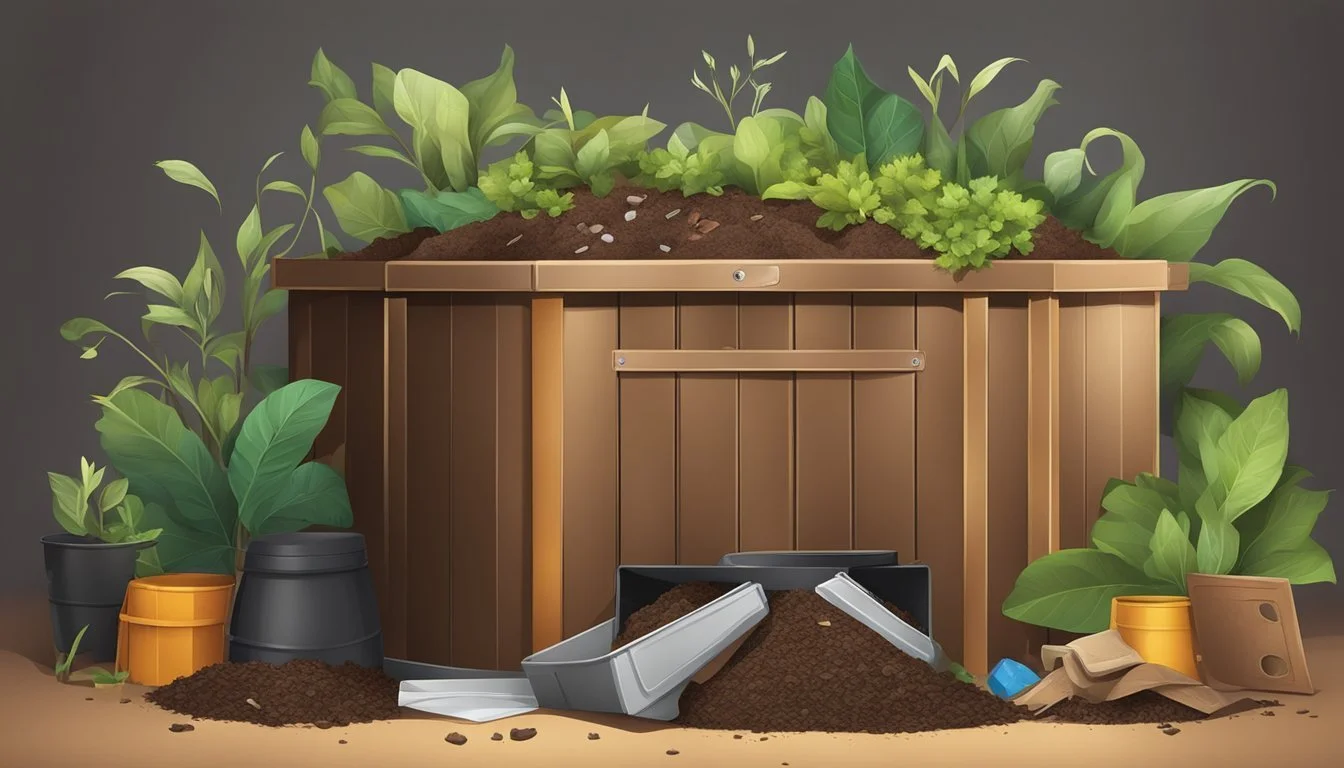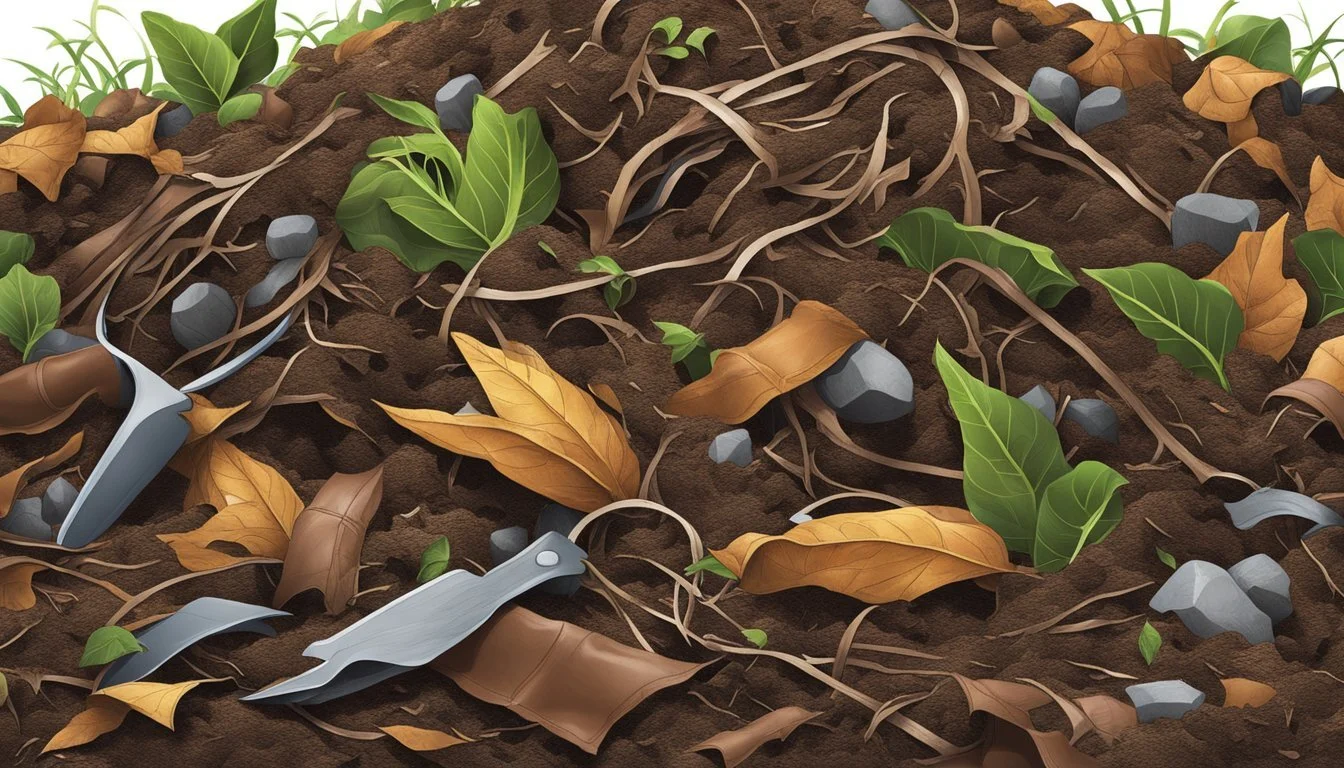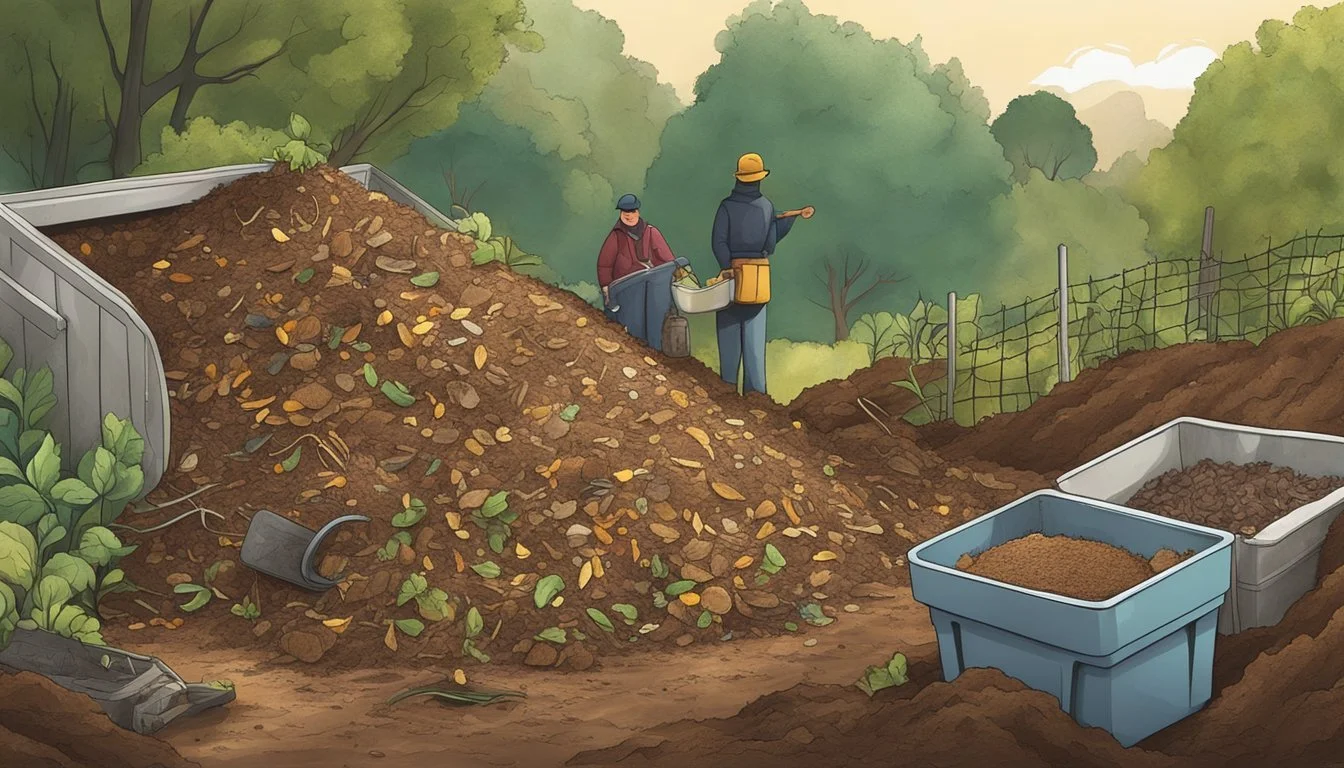Can You Compost Leather Scraps?
Understanding Biodegradable Waste Management
Composting is a sustainable method to recycle organic waste, including food scraps and yard waste. It is a natural process that turns organic materials into a valuable fertilizer, enhancing soil health. As environmental consciousness grows, individuals and businesses alike are seeking ways to minimize waste. One common query pertains to whether leather scraps, a byproduct of both craft and industrial processes, can contribute to compost heaps.
Leather is a natural material, and like other organic substances, it raises questions about its compatibility with composting. Considering leather undergoes significant processing to become the durable material used in goods ranging from clothing to furniture, its inclusion in composting efforts is not as straightforward as that of raw food scraps. The question hinges on leather's ability to break down in a compost pile and the potential benefits or drawbacks it may introduce to the composting process.
In evaluating the compostability of leather, it is essential to consider its treatment and the effects of added chemicals from the tanning process. While untreated leather may decompose over time, treated leather contains preservatives that can hinder the composting process and potentially introduce undesirable elements into the finished compost. Therefore, composting leather requires understanding its properties and the implications for the compost ecosystem.
Understanding Compost
Composting is an essential process for converting organic waste into nutrient-rich soil, crucial for plant growth and soil health.
Composting Basics
Composting is the biological decomposition of organic materials by microbes under controlled conditions to form compost. A successful composting operation requires a balance of nitrogen-rich materials, known as "greens," and carbon-rich materials, or "browns." Greens include items like vegetable scraps and grass clippings, which provide the compost with nitrogen, a key nutrient for microbial growth. On the other hand, browns such as dry leaves, straw, and paper add carbon to the mix, essential for absorbing excess moisture and providing structure to the pile.
The process occurs in a compost pile or a compost bin, where microorganisms break down the materials in the presence of oxygen and moisture. This results in a nutrient-rich soil amendment with excellent fertilization properties that is beneficial to the environment by reducing waste and promoting sustainable gardening practices.
Materials Suitable for Composting
When selecting materials for composting, one should consider their potential to decompose and enrich the resulting compost. Suitable materials include:
Kitchen Scraps: Vegetable peelings, coffee grounds, and fruit scraps.
Yard Waste: Grass clippings, leaves, and plant trimmings.
These materials are categorized into two main groups, as shown in the table below:
Type Examples Role in Composting Greens Food scraps, grass Provide nitrogen, accelerate decomposition Browns Leaves, branches Add carbon, improve aeration, control moisture
Materials unsuitable for composting include dairy products, meats, and fats, as they can attract pests and lead to unpleasant odors. Moreover, certain materials like treated wood, diseased plants, and synthetic fibers may contain chemicals or pathogens that can contaminate the compost and harm the environment.
To maintain a healthy composting process, it's vital to monitor the balance of materials, turning the pile regularly to aerate it and ensure proper decomposition, resulting in a high-quality compost ideal for garden fertilization and soil improvement.
Is Leather Compostable?
Composting leather scraps is a nuanced issue due to the material's natural origins and added chemicals during processing.
Leather Properties and Composting
Leather is a natural material traditionally derived from animal hides. In its purest form, it can decompose over time. However, the modern tanning process introduces tanning agents, oils, and sometimes toxic dyes, which can complicate the composting process. The tanning procedure, especially when using chrome or other heavy metals, renders leather less biodegradable.
Challenges with Leather Composting
While leather does break down, the rate at which it composts is slowed by chemicals and dyes used during the manufacturing stage. These substances can impede microbial activity necessary for composting and may release harmful substances into the compost. Additionally, the presence of oils within treated leather can introduce unwanted fats that don't break down efficiently in a traditional composting environment.
Prepping Leather for Composting
Preparing leather for composting involves two essential steps: shredding the leather scraps to increase their surface area, and removing any non-leather parts that may inhibit the composting process or introduce contaminants.
How to Shred Leather Scraps
Shredding leather scraps is crucial as it accelerates decomposition by exposing more surface area to the composting microorganisms. To shred leather, one can use:
Cutting Tools: Scissors or a utility knife can manually cut scraps into smaller pieces.
Shredder: A heavy-duty shredder capable of processing leather can turn scraps into fine particles.
Steps for Shredding:
Sort Leather: Separate scraps by thickness and texture.
Cut into Strips: If using scissors or a knife, first cut the leather into thin strips.
Shred: Feed the strips into a shredder or continue cutting into smaller pieces manually.
Removing Non-Leather Parts
Composting leather scraps requires the removal of any non-biodegradable and potentially toxic elements, such as:
Zippers: Metal or plastic fasteners should be detached.
Studs: Decorative metal parts must be carefully extracted.
Steps for Removal:
Inspect Scraps: Check each piece for non-leather parts.
Detach Non-Leather Elements: Use pliers or a seam ripper for removal.
By following these processes, the resulting leather scraps will be more suitable for the composting system, promoting effective breakdown and minimizing environmental impact.
Alternatives to Composting Leather
While composting leather scraps may not be the most efficient or environmentally friendly method due to the tanning process and potential chemical content, there are alternative methods to manage leather waste responsibly. These include repurposing and recycling to extend the material's life cycle, thus minimizing environmental impact.
Repurposing Leather
Leather scraps can be repurposed into new products, giving the durable material a second life. Individuals and businesses alike can transform leather remnants into smaller items such as handbags, belts, or other accessories. Creative repurposing not only diverts leather from landfills but also fosters sustainable consumption practices.
Handmade Crafts:
Accessories: Craft bespoke jewelry or keychains.
Home Decor: Create coasters, bookmarks, or small art pieces.
Fashion Items:
Patches: Enhance fabric items with leather accents.
Repair: Use scraps to repair worn leather goods.
Recycling Leather
Recycling leather involves a different process, where leather scraps are broken down and reconstituted into a new material. While recycling options are more limited due to the nature of treated leather products, specialized facilities can process leather to be used in a variety of applications.
Industrial Recycling: Leather can be ground and repurposed for use in manufacturing.
Applications include:
Upholstery padding
Insulation materials
Automotive interiors
Manufacturing Recycled Leather Goods:
Recycled leather fabrics can be produced and used to make items that are less dependent on the leather's original quality and integrity, such as:
Echo-friendly handbags
Durable belts
Mixed-fabric garments
Compost Pile Management
When adding leather scraps to a compost pile, mindful management is essential to facilitate breakdown and prevent negative impacts on the compost quality.
Maintaining Proper Balance
A compost pile requires a delicate balance between carbon ("browns") and nitrogen ("greens") to decompose effectively. For leather scraps, which are high in nitrogen, it's important to balance them with carbon-rich materials such as:
Leaves
Straw
Sawdust
The recommended carbon-to-nitrogen ratio for optimal composting is between 30:1 and 15:1.
Turning and Aeration
Regular turning and aeration of the compost pile are crucial for maintaining moisture levels and distributing air throughout the pile. Turning not only mixes the materials but also:
Introduces oxygen, which is necessary for microorganisms to thrive and break down the materials.
Helps to regulate the pile’s temperature, ensuring that it stays within the desired range of 131° to 170°F.
A composting bin should be turned using a shovel or composting fork at least once a week, incorporating yard waste, grass clippings, and weeds to maintain aeration and moisture.
Common Compost Ingredients
In composting, balancing materials is critical for a healthy, nutrient-rich compost. Here's a closer look at the types of materials that can be composted and those that should be avoided.
Green and Brown Materials
Green materials are rich in nitrogen and help to heat up the compost pile as they break down quickly. These include:
Vegetable scraps and peels
Fruit waste
Coffee grounds and filters
Fresh grass clippings
Garden plants
Hair and fur
Manure from herbivores
Brown materials provide carbon, aiding in the compost's aeration and structure. They decompose more slowly, including:
Shredded newspaper and cardboard
Hay and straw
Sawdust and wood chips
Cotton and wool rags
Shredded branches and twigs
What Not to Compost
Certain materials are unsuitable for compost because they may attract pests, cause odors, or contain harmful pathogens and chemicals:
Meat, fish, and dairy products
Fats, cooking oils, and grease
Diseased plant materials
Pet waste from carnivores
Treated wood and ashes
Synthetic fibers and plastics
Glass and metals
Rice (it can attract unwanted pests)
Bread and cereal (they may attract pests and mold)
Enhancing Compost Quality
To improve compost quality and accelerate the decomposition process, one can introduce natural additives and create an environment that encourages faster breakdown of materials.
Using Additives
In composting, additives are materials added to a compost pile to optimize the breakdown of waste. Key additives include:
Coffee Grounds and Filters: Rich in nitrogen, coffee grounds enhance microbial activity, while filters contribute to brown waste necessary for balanced compost.
Egg Shells: These provide calcium, which improves compost structure and helps regulate acidity.
Fruit and Vegetables: They decompose quickly, contributing moisture and nutrients.
Tea Bags: Containing tannins, tea bags assist in acidifying the compost and add nitrogen once the bags are free of staples and non-compostable materials.
One must ensure that all additives, especially non-leather natural fibers and green waste like vegetable peels, are devoid of chemicals or non-compostable substances to prevent contamination.
Encouraging Faster Breakdown
To hasten the degradation of compost materials, consider the following methods:
Worms: Introducing worms to a compost pile can significantly speed up the breakdown of organic matter as they digest and convert it into worm castings, a nutrient-rich additive.
Wood Chips: By adding small bits of wood chips, you increase aeration in the pile, which benefits the microorganisms responsible for decomposition.
A balanced mix of green waste (like vegetable scraps and grass clippings) and brown waste (like dried leaves and cardboard) is essential for a fast and efficient composting process. Maintaining this balance ensures optimal moisture and aeration, leading to high-quality compost.
Safety and Health Considerations
When composting leather scraps, one must address potential health and safety concerns, including the risk of contamination and the attraction of pests. The composting process for leather is not straightforward due to the presence of various chemicals from the tanning process and the material's slow decomposition rate.
Preventing Contamination
Leather often undergoes tanning, a chemical process that makes it durable but can introduce harmful substances into your compost. Tanning chemicals, such as chromium salts, are common in non-metal-free leather and can contaminate compost, making it unsuitable for use in growing food. It's essential to ensure that only metal-free or vegetable-tanned leather is considered for composting to avoid introducing these toxins.
Check leather origin: Ascertain if the leather is vegetable-tanned or metal-free.
Evaluate decomposition: Understand that even metal-free leather will decompose slowly.
Attracting Pests
Leather scraps in compost can emit odors as they decompose, which may attract pests like rodents and insects. A slow decomposition rate means these smells persist longer, increasing the risk of a pest problem.
Manage compost heap: Regularly turn the compost to minimize odors.
Secure compost bin: Use a compost bin with a secure lid to deter pests.
Composting at Different Scales
The compostability of leather scraps is influenced by the scale at which composting occurs, either at home or industrially. Factors such as the presence of metal and oils, the type of tanning process, and the method of cutting the leather scraps can all affect the decomposition rate.
Home Composting
In a home composting setting, one can employ a backyard compost pile or a composting bin to break down leather scraps. Home composters should be aware that leather composted in a domestic environment:
Must be free of metal parts like zippers and studs that won't decompose.
Should be cut into smaller pieces to accelerate decompose.
May decompose slowly due to oils and tanning agents.
Leather scraps should be added to the bin or pile in moderation and mixed with other organic materials to balance the compost's carbon to nitrogen ratio.
Industrial Composting
Industrial composting facilities are equipped to handle larger volumes of waste and often employ high-temperature composting methods. Leather scraps composted industrially:
Are processed at higher temperatures, which can break down tough materials more efficiently.
Benefit from controlled conditions that ensure the proper balance of moisture, aeration, and microbial activity.
Must consider the type of tanning process used, as certain chemicals can hinder the composting process or present environmental concerns.
Leather is treated differently in industrial settings to ensure it breaks down correctly, fitting into the larger system of waste management.











